Instruction
Dennis Clark: More golf swing myths
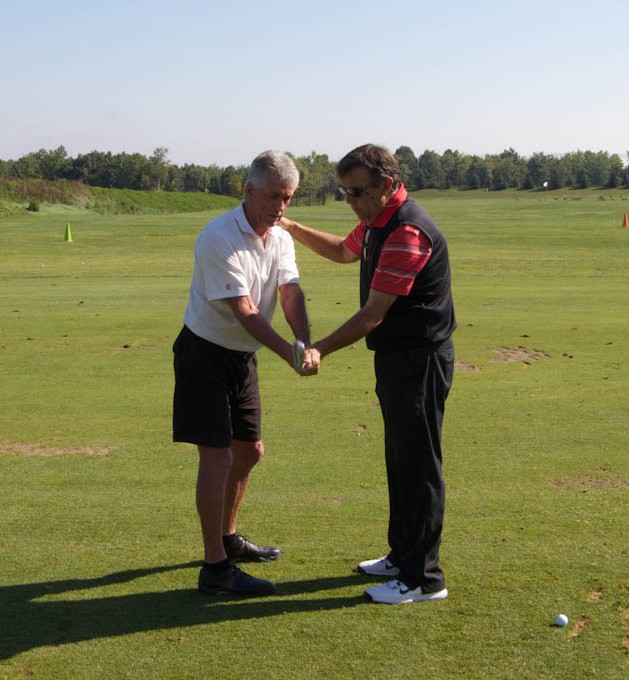
A few months ago, Dennis Clark wrote the popular instruction article “Three golf swing myths that can hurt your game.” Here are five more golf swing myths:
4. Myth: Hitting down on the golf ball causes more spin.
Fact: It does not: Dynamic Loft, speed, and point of contact on the face control spin. That’s it. The angle of attack technically does not matter. If you hit down OR up the golf ball, spin will remain the same if the dynamic loft and face contact point and speed remain the same. Nine iron spins more than two iron because of loft, not because the attack angle is steeper.
5. Myth: A club face square to the target causes the golf ball to fly straight.
Fact: Sorry, just not the case. Read my previous article on the D Plane. A club face square to the path will cause the golf ball to fly without curve (left, right or straight). It has nothing to do with the target line unless the golf club is traveling at the target at impact. This is rarely the case — perhaps a 3-wood off the ground occasionally.
6. Myth: A draw is hit with the club face closed to the target. A fade is hit with the club face open to the target.
Fact: Please refer to myth/fact No. 2. The golf ball starts in the direction of the face and curves away from the path. So if you want to play a true right-to-left draw, the face should be open (pointing right of target) and the path should be in-to-out of where the face is pointing. Just the opposite for a fade. So yes, in the Masters playoff Bubba’s face was left of the green and his path had the be extremely inside out.
7. Myth: Wedges go high, two irons go low.
Fact: Not if they are both struck correctly. In fact, every shot you hit, regardless of the club you hit it with, will go the same height (about 35 yards, or 100+ feet high for tour pros). The reason they look different is the the wedge gets to its apex well before the driver does, but the apex will be the same, all things being equal.
8: Myth: Draws go further than fades.
Fact: This is in the “yes but” category. Yes, but only because draws are launched lower. There is no evidence that left axis tilt (draw spin) runs further than right axis tilt (fade spin) whatsoever. But the draw is produced by a club face that is closed relative to the path (and therefore slightly de-lofted) and a fade is produced by club face open relative to the path (and therefore lofted). If they are hit at the same trajectory (which technically can be done) they will go the same distance, all thing being equal. So a draw hits “hotter” because the landing angle was lower.
How do I know all this? TRACKMAN tells me so. If you see ball flight through the eye of this amazing machine, you might never think of a golf swing the same again. It is truly revolutionary and scary accurate. I see it all day every day and would not teach without it. Our years of “guessing” in golf instruction are over.
Analogy: An X-ray machine versus an MRI machine or 3-D vs 2-D.
Because of golf doppler radar technology, teaching world will never be the same. Every one of my lessons measures, not guesstimates the result of every shot. Trackman measures 21 variables, ball flight and club delivery, which are all measured to plus or minus a fraction of a percent. Teachers, don’t leave home without it.
As always, feel free to send a swing video to my Facebook page and I will do my best to give you my feedback.
Click here for more discussion in the “Instruction & Academy” forum.
Dennis Clark is a PGA Master Professional at Nemacolin Woodlands Resort in Farmington, Pa., and Marriott Marco Island Resort in Naples, Fla. He has been a professional for over 25 years. You can learn more about Dennis on his website, http://www.dennisclarkgolf.com
- LIKE1
- LEGIT0
- WOW1
- LOL0
- IDHT0
- FLOP1
- OB0
- SHANK0
Instruction
Clement: Laid-off or perfect fade? Across-the-line or perfect draw?

Some call the image on the left laid off, but if you are hitting a fade, this could be a perfect backswing for it! Same for across the line for a draw! Stop racking your brain with perceived mistakes and simply match backswing to shot shape!
- LIKE0
- LEGIT0
- WOW0
- LOL0
- IDHT0
- FLOP0
- OB0
- SHANK1
Instruction
The Wedge Guy: The easiest-to-learn golf basic

My golf learning began with this simple fact – if you don’t have a fundamentally sound hold on the golf club, it is practically impossible for your body to execute a fundamentally sound golf swing. I’m still a big believer that the golf swing is much easier to execute if you begin with the proper hold on the club.
As you might imagine, I come into contact with hundreds of golfers of all skill levels. And it is very rare to see a good player with a bad hold on the golf club. There are some exceptions, for sure, but they are very few and very far between, and they typically have beat so many balls with their poor grip that they’ve found a way to work around it.
The reality of biophysics is that the body moves only in certain ways – and the particulars of the way you hold the golf club can totally prevent a sound swing motion that allows the club to release properly through the impact zone. The wonderful thing is that anyone can learn how to put a fundamentally sound hold on the golf club, and you can practice it anywhere your hands are not otherwise engaged, like watching TV or just sitting and relaxing.
Whether you prefer an overlap, interlock or full-finger (not baseball!) grip on the club, the same fundamentals apply. Here are the major grip faults I see most often, in the order of the frequency:
Mis-aligned hands
By this I mean that the palms of the two hands are not parallel to each other. Too many golfers have a weak left hand and strong right, or vice versa. The easiest way to learn how to hold the club with your palms aligned properly is to grip a plain wooden ruler or yardstick. It forces the hands to align properly and shows you how that feels. If you grip and re-grip a yardstick several times, then grip a club, you’ll see that the learning curve is almost immediate.
The position of the grip in the upper/left hand
I also observe many golfers who have the butt of the grip too far into the heel pad of the upper hand (the left hand for right-handed players). It’s amazing how much easier it is to release the club through the ball if even 1/4-1/2″ of the butt is beyond the left heel pad. Try this yourself to see what I mean. Swing the club freely with just your left hand and notice the difference in its release from when you hold it at the end of the grip, versus gripping down even a half inch.
To help you really understand how this works, go to the range and hit shots with your five-iron gripped down a full inch to make the club the same length as your seven-iron. You will probably see an amazing shot shape difference, and likely not see as much distance loss as you would expect.
Too much lower (right) hand on the club
It seems like almost all golfers of 8-10 handicap or higher have the club too far into the palm of the lower hand, because that feels “good” if you are trying to control the path of the clubhead to the ball. But the golf swing is not an effort to hit at the ball – it is a swing of the club. The proper hold on the club has the grip underneath the pad at the base of the fingers. This will likely feel “weak” to you — like you cannot control the club like that. EXACTLY. You should not be trying to control the club with your lower/master hand.
Gripping too tightly
Nearly all golfers hold the club too tightly, which tenses up the forearms and prevents a proper release of the club through impact. In order for the club to move back and through properly, you must feel that the club is controlled by the last three fingers of the upper hand, and the middle two fingers of the lower hand. If you engage your thumbs and forefingers in “holding” the club, the result will almost always be a grip that is too tight. Try this for yourself. Hold the club in your upper hand only, and squeeze firmly with just the last three fingers, with the forefinger and thumb off the club entirely. You have good control, but your forearms are not tense. Then begin to squeeze down with your thumb and forefinger and observe the tensing of the entire forearm. This is the way we are made, so the key to preventing tenseness in the arms is to hold the club very lightly with the “pinchers” — the thumbs and forefingers.
So, those are what I believe are the four fundamentals of a good grip. Anyone can learn them in their home or office very quickly. There is no easier way to improve your ball striking consistency and add distance than giving more attention to the way you hold the golf club.
More from the Wedge Guy
- The Wedge Guy: Golf mastery begins with your wedge game
- The Wedge Guy: Why golf is 20 times harder than brain surgery
- The Wedge Guy: Musings on the golf ball rollback
- LIKE88
- LEGIT15
- WOW6
- LOL1
- IDHT0
- FLOP4
- OB1
- SHANK9
Instruction
Clement: Stop ripping off your swing with this drill!

Not the dreaded headcover under the armpit drill! As if your body is defective and can’t function by itself! Have you seen how incredible the human machine is with all the incredible feats of agility all kinds of athletes are accomplishing? You think your body is so defective (the good Lord is laughing his head off at you) that it needs a headcover tucked under the armpit so you can swing like T-Rex?
- LIKE0
- LEGIT3
- WOW2
- LOL0
- IDHT0
- FLOP0
- OB0
- SHANK2
-

 19th Hole3 weeks ago
19th Hole3 weeks agoLET pro gives detailed financial breakdown of first week on tour…and the net result may shock you
-

 19th Hole7 days ago
19th Hole7 days agoReport: LIV star turns down PGA Championship invite due to ‘personal commitments’
-
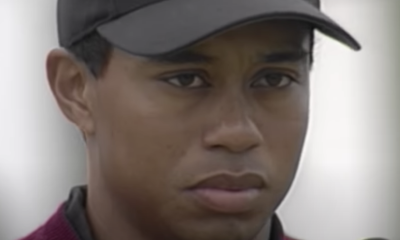
 19th Hole2 weeks ago
19th Hole2 weeks agoGary Player claims this is what ‘completely ruined’ Tiger Woods’ career
-
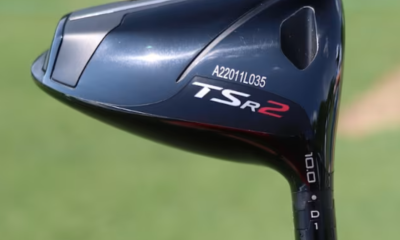
 Equipment6 days ago
Equipment6 days agoDetails on Justin Thomas’ driver switch at the Wells Fargo Championship
-
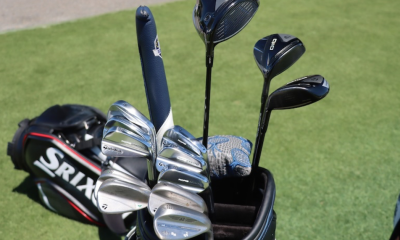
 Whats in the Bag2 weeks ago
Whats in the Bag2 weeks agoTeam McIlowry (Rory McIlroy, Shane Lowry) winning WITBs: 2024 Zurich Classic
-
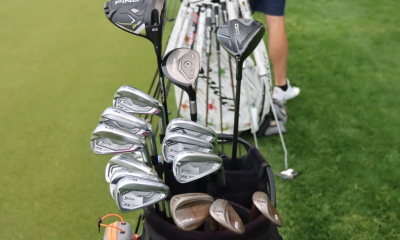
 Whats in the Bag7 days ago
Whats in the Bag7 days agoKeegan Bradley WITB 2024 (May)
-

 Equipment2 weeks ago
Equipment2 weeks agoGolf fans left surprised by LIV’s choice of course for its 2024 individual championship event
-

 19th Hole2 weeks ago
19th Hole2 weeks agoLIV star splits with swing coach after working together for 14 years













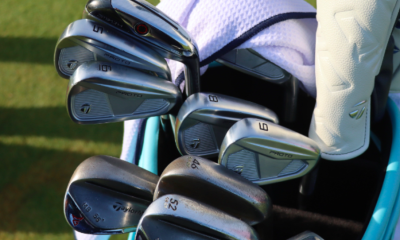

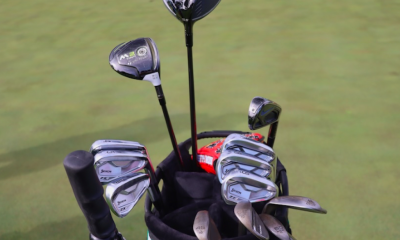

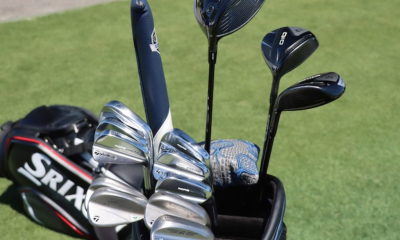

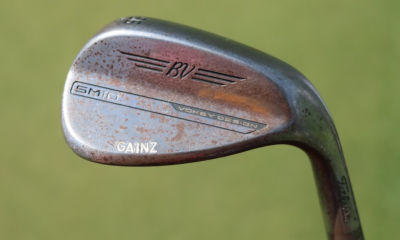

Jooma
Oct 11, 2012 at 11:33 pm
A golf ball spin is created only by the angle of attack of a golf club face and the friction between the ball and the club face.
Steeper angle of attack creates more force therefore more friction resulting in more spin.
Justin
Jun 30, 2013 at 1:04 am
Sorry, but no. To both. Still believe every new drivet model will grant you x amount of yards, too?
Jooma
Oct 11, 2012 at 11:26 pm
Draw will ALWAYS go further (assuming that the same force is applied) because the ball is trapped by the club face and thus more force can be transferred to it. Fade or slice is just sliding against the face of the club with the majority of force not being applied to the ball.
James Lythgoe
Aug 28, 2012 at 6:31 pm
For Myth # 8, fades are struck with an open face which effectively adds loft to the club used. Draws are struck with the clubface closed or de-lofted. If you were to hit a fade or a draw with the same amount of loft, both shots would fly the same distance.
James Lythgoe
Aug 28, 2012 at 6:26 pm
Adding to Myth # 4 I would say having the back of the ball exposed to the clubface is a big factor in determining spin. Playing in Canada where the ball surrounds the back of the ball, it is very difficult to spin the ball. Go to Florida and the grass lies flat on the fairway so the whole back of the ball is exposed. You can really hit crisp clean shots from lies like that.
Troy Vayanos
Aug 25, 2012 at 4:28 am
Some good ones her Dennis. It’s very interesting when you explain them like this compared to a lot of other generic golf instruction out there today.
dennis
Aug 24, 2012 at 5:44 pm
There are no false readings but you have to read all the variables to get an accurate take on it. For example if you get a 4-degree closed face to path reading and right spin axis, you can calculate how much toward the heel the ball was it…